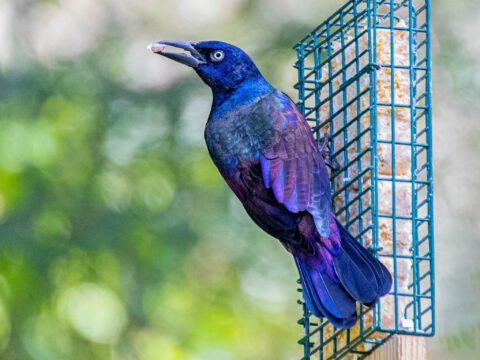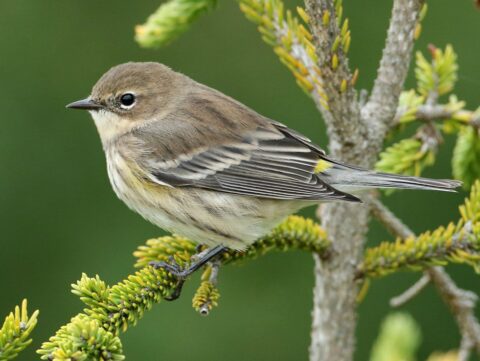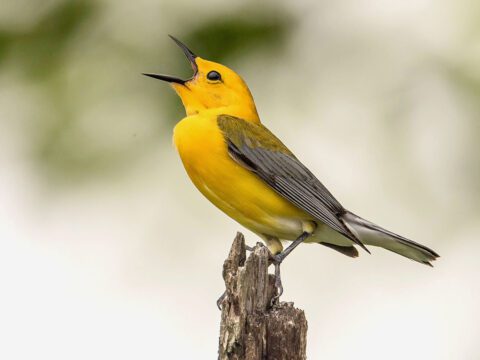Teachers and students in Mexico and the U.S. connect over birds
By Nancy Trautmann, director of the Cornell Lab's Education program December 7, 2011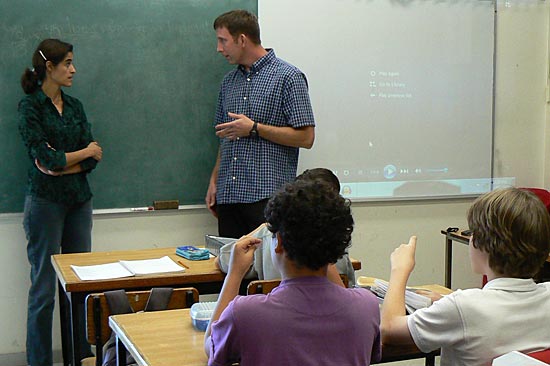
Children today are our planet’s hope for the future, but only if they grow up with an interest in nature and a sense of responsibility for the environment. In our Crossing Boundaries project, we aim for students to gain global perspectives on nature and conservation. One strategy is by connecting U.S. and Mexican classrooms, giving students the chance to send projects back and forth or even hold videoconferences over the Internet.
As part of this effort, I recently traveled in Jalisco, Mexico, with two New York teachers, Roberta Palmiotto and Jamie Hefti. We visited classrooms, met teachers, and talked about connecting distant students through talking about birds and teaching each other about their local species and issues.
We’ve found that when students share their work with peers, they stop worrying so much about getting a good grade and focus instead on relevant, real-world communication. Teachers have long used classroom pen pals as a way to bridge cultures and inspire students, but the Internet has made that approach more powerful than ever. Two years ago, our BirdSleuth project helped middle school students in Florida and Oregon peer review each other’s science projects. We’re hoping soon to be able to do something similar with Mexican classrooms, getting the students talking about and studying bird species that we share across countries and others that are unique to one setting or the other.
During our travels in Jalisco, we visited schools in and around Guadalajara and held a daylong workshop with Mexican teachers interested in birds and information technology. Palmiotto and Hefti demonstrated how their students use free software to create podcasts and video stories about birds—approaches their Mexican collaborators now hope to adopt. Discussions focused on questions such as how to inspire students to care about birds and their habitats, and whether exchanging podcasts or video reports with distant peers might be better than traditional classwork in motivating students to learn.
Although computers and Internet connections are more limited in some of their schools than in ours, the Mexican teachers were clearly enthusiastic about giving these approaches a try. For his part, Hefti was inspired by the creativity and resolve he saw in Jalisco. After returning home he reflected, “My perspective on what American education should be has been altered. We met with people who do so much with so little…. What I saw was that constraints were not the focus to those that wanted to make a difference in Mexico.”
“As the Jalisco teachers were leaving our workshop, I felt sad to see them go,” Palmiotto said. “It was an honor to talk with them and hear about the amazing programs they are already involved in. I truly hope that we can foster international respect by continuing to connect our students through letters and technology.”
While traveling, Palmiotto and Hefti posted news updates so their students could follow along at home, and they also carved out time in our hectic travel schedule to Skype (video chat) with their students and answer questions about Mexican food, weather, school life, and birds. (Here are links to Palmiotto’s blog and Hefti’s blog.)
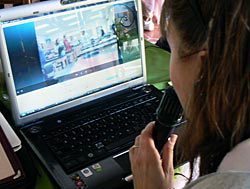
The central question motivating our trip was whether students will be more intrigued by collaborating with students in a distant land. Will children in Mexico gain pride in their local environment through sharing information with U.S. students?
We think they will. At a school in the town of Autlán, an enthusiastic teen asked me whether we have as many endemic bird species in New York as they have in Jalisco. I replied that in fact New York has no endemic bird species and that we were thrilled to be having the chance to view several in Jalisco that we would never see on the homefront. We also had fun discussing the idea that much like the “snowbirds” in New York who take their winter vacations down south, many of our bird species do this too—and therefore are familiar at different seasons in our two settings.
After returning home, Hefti reflected, “For every new experience life in Mexico presented, my mind would further generate a thousand combinations of ideas and questions. What are the environmental issues inherent to a student’s life in Mexico? How do they compare to those of children growing up in the United States? How can we create time for students in both countries to share and discuss their environmental experiences?”
These are the sorts of questions Crossing Boundaries was created to tackle. We’ll be exploring them throughout this school year and beyond with the help of teachers like Hefti, Palmiotto, and our new Mexican collaborators. Find out more about our work, and the teachers and scientists working with us, at our Crossing Boundaries site.

All About Birds
is a free resource
Available for everyone,
funded by donors like you
American Kestrel by Blair Dudeck / Macaulay Library

